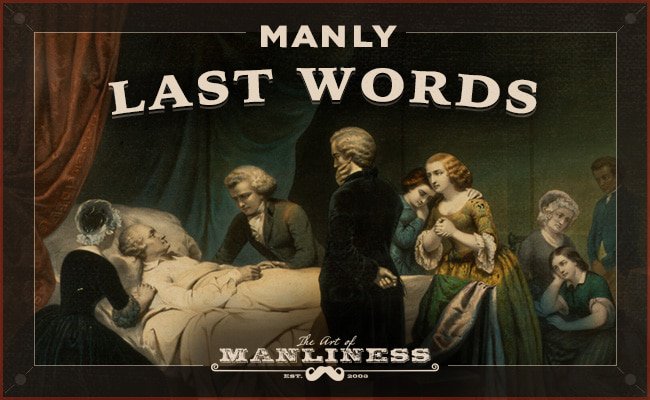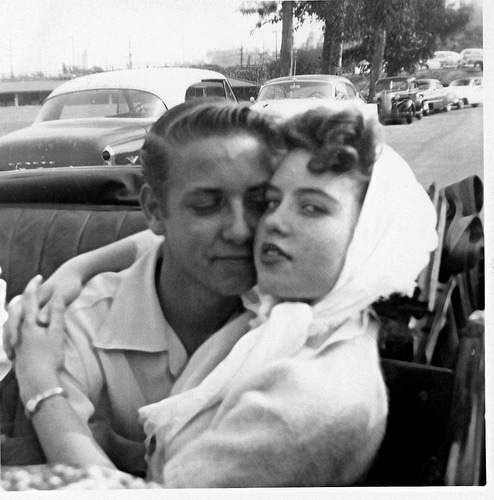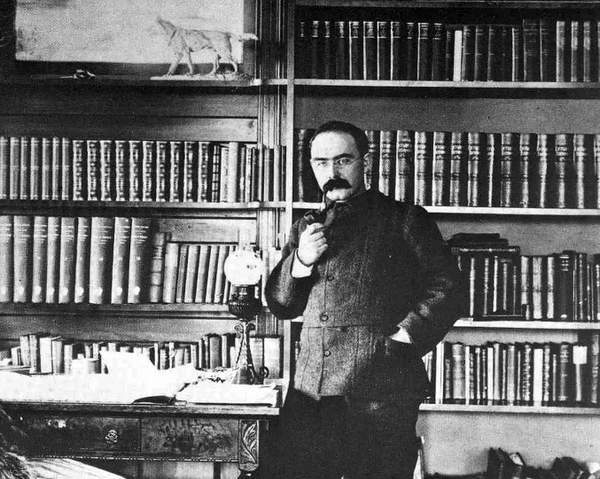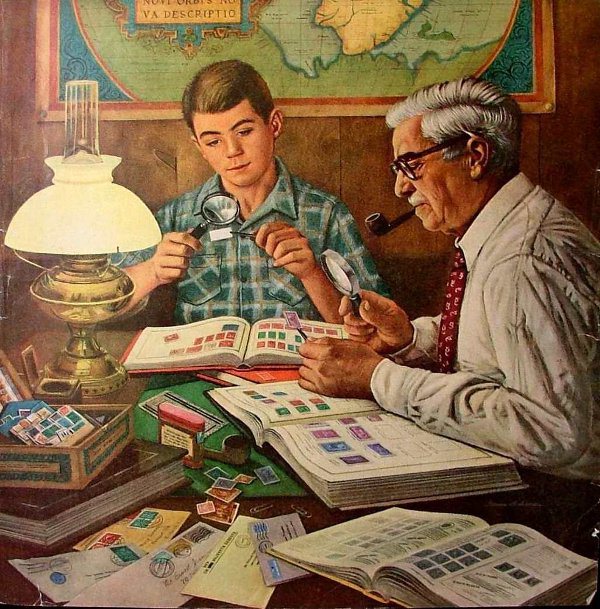
Hobbies should be an important part of every man’s life, especially in our increasingly passive, and abstract world. In a previous post, we outlined a few benefits of having a favorite pastime, and offered a list of 45 manly hobbies for men to consider as well.
Today, we’re going to focus on one of the oldest and most popular of hobbies: collecting. The idea of amassing items just for the enjoyment of it started as far back as 4,000 B.C., when primitive men created collections of non-functional stone tools. When civilization progressed, collecting became a hobby almost exclusively of the rich. They’d spend thousands of dollars on art and other unique, high-value items, even sending agents in their place instead of doing the work themselves. For this reason, collecting didn’t really take hold as a recognized hobby of the common man until the mid-1800s or so. From that point until the early 1900s, however, collecting actually became synonymous with the word “hobby.” It was truly an everyman’s pastime; the rich would collect art and furniture, while poor kids would follow cigar-smoking men down the street to collect discarded cigar bands. Anyone could participate, and for reasons we’ll see below, it was even encouraged as part of a child’s education. While not having the same prestige in our modern world (partially because of shows like Hoarders which focus on the negative aspects of collecting), collecting is still a worthwhile and fun hobby for men to pursue.
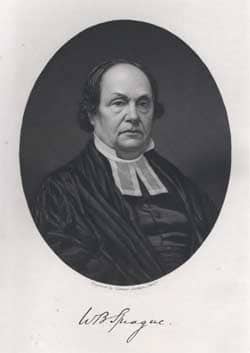
William Buell Sprague, the father of modern collecting.
In America, the father of collecting as a hobby was William Buell Sprague. At the age of 21, he chanced upon an opportunity to receive 1,500 George Washington autographs. From that starting point, he compiled over 100,000 autographs in his lifetime. In doing so, he came to establish some of the traditional “rules” and communal habits of collectors. While the number of different items collected a hundred years ago was fairly limited (autographs, stamps, books, “chromos”), today, they are innumerable — be they considered “trash” (beer cans, phone books, etc.) or items purposely made for collecting (souvenir spoons, pins, collectible editions of books). Most men I know have some sort of collection, even if it’s not intentional or an entirely conscious decision.
Let’s dig in to not only how to start a collection and some collector’s guidelines, but also how the hobby is related to masculinity.
The Thrill of the Hunt: Collecting and Masculinity
“For men in particular, the image of the hunt as both a search for game and a form of game imbued collecting with an air of masculinity that legitimated it as an expression of superiority in a Darwinian world.” -Steven Gelber, Hobbies
Since its earliest days, collecting has mostly been thought of as a man’s hobby. While women tend to be more multi-dimensional and relaxed in their leisure, men have a tendency to narrowly focus in on singular tasks and become a little obsessive in their pursuits. We like to go whole hog on what’s in front of us. The male brain also has a bent towards systemizing that lends itself well to the hobby of collecting — and organizing that collection. Even the language of collecting is distinctly masculine: “hunting” for items, “winning” an item from another collector, “pursuing” a rare piece.
Part of this lies in the fact that collecting can be a competition of sorts, in a couple different ways. First, it’s a competition for specific pieces; who can haggle the best, hunt the best, dig the deepest to find the rarest piece. Second, it’s a competition in establishing prestige over our peers. In finding unique items, we earn respect as expert “hunters” (at least from our fellow collectors!):
“The desire to be the possessor of a unique item is, in the opinion of many collectors, the underlying motivation for the hobby since it makes one the object of envy, and to be envied is a sign of success.” -Gebler, Hobbies
In a world where actual hunting is no longer a defining activity of masculinity (although it certainly can be!), being the best at a hobby — especially the traditionally masculine hobby of collecting — can give you a sense of pride and make you more interesting and notable to others.
Additionally, sociologists have theorized that collecting (especially the thrill of the hunt for that next great piece) can provide the same kind of rush as hunting or winning a sporting competition. This is why collecting can quickly turn into obsession. We get a rush when we find a new item, especially one that’s rare. One anonymous book collector from the 1800s agrees:
“Your breath quickens, your heart misses a beat and you feel hot and cold all over.”
Collecting provides feelings of pride and ownership that are even greater than in owning other items, because we know what we have is at least somewhat unique. Everyone has a TV, furniture, bestselling books; not everyone has an awesome vintage men’s magazine collection like Brett does. Our collected pieces hold a special place in our hearts and become some of our most valued possessions.
The pride of a collection is a pride that is hard to come by in more passive hobbies like reading, whittling, or even gardening. While you get a sense of completion with other hobbies, collecting can truly give you a sense of victory — of having successfully taken down your White Whale — when you’ve found a piece you’ve been hunting for your whole life.
The Benefits of Having a Collection
Builds organizational skills. Collections often naturally end up in sets (more below), meaning that collectors spend a good deal of time with various lists and documents that help them organize their pieces. It gives your naturally systemizing brain some exercise! Organizing and cataloging is also what separates collecting from simply accumulating. One textbook from 1941 noted that “one who simply accumulates odds and ends and stows them away in a corner is not a collector. A real collector will take great pains to see that each specimen is carefully classified and understood.”
Builds expertise. We’ve talked before on AoM about the importance of gaining mastery or expertise in some specific niche or category. Having a collection offers a chance for you to become a T-shaped man. When you start researching for your collection, you’ll usually start broad, building a foundational base of knowledge. But when you delve further, your collection will find a niche, and your expertise will be built up. Who knows, maybe becoming an expert on antique shaving sets or 19th century pocket knives could lead to a job someday.
This benefit attributed to collecting was often particularly focused on children. It was thought, especially in the early 1900s, that learning itself was a form of collecting, so collecting objects was a natural extension of simply gathering information. One expert in 1928 said that “once a child starts collecting stamps or toy banks or miniature porcelain animals, the very act of collecting becomes an education.” So keep your kids in mind as you collect, and let them in on the fun.
Builds marketplace skills. Most men like to think of themselves as astute consumers. Really, though, we too often pay full sticker price and get sucked in by cheap gimmicks at big box stores. Collecting is a great way to build up those marketplace skills of haggling, researching, and being absolutely sure you’re getting the right item. Since trading and bartering is so ingrained in the collectibles marketplace (more on that below), you’ll quickly get firsthand experience in those skills. When you’ve successfully haggled for a rare Forest Ranger patch, you’re likely to transfer that newfound confidence to other purchases as well.
Potentially profitable. While certainly not the point of having a collection, your pieces can often be profitable. Especially when gathered in sets, antiques and other collectibles can be a good investment.
How to Start a Collection
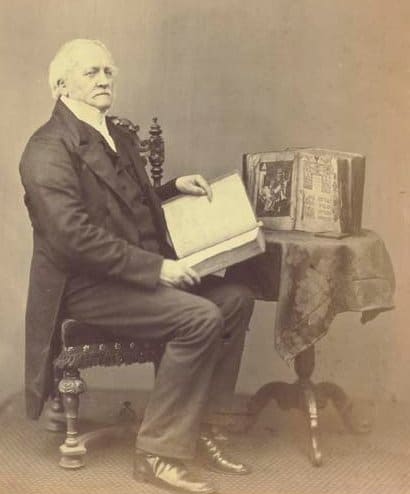
Sir Thomas Phillipps wanted all the books.
Pick your poison. First, you obviously have to decide what you’re going to collect. Many times this isn’t necessarily a conscious choice, but something handed down through a family, or a random item that catches your eye on a trip which then snowballs into a collection.
If you don’t already have a collection, it’s okay to pick something that simply interests you. If you’re an avid reader, books are a natural progression. If you’re a gun enthusiast, antique revolvers are a great choice. Make sure your choice is broad enough to make the hunting fairly easy at first, but niche enough as to not be overwhelming. For instance, you don’t want to collect sports cards as a whole — that would just be too much; focus in on a single sport or a particular team or player. When delving into book collecting, don’t be like Sir Thomas Phillipps, who in the 19th century decided he wanted a copy of every single printed book in the world. (He didn’t quite accomplish that feat, but he did manage to get his hands on at least 40,000 printed books, making him one of the most accomplished book collectors of all time.) Instead, narrow it down to first editions, or every edition of the works of Jack London.
Begin with the commonplace. You have to cast a wide net when starting your collection. You need to start with common pieces that are low-value, but will build your collection’s foundation. As you’re doing your homework (see below), you’ll come to identify those common pieces. Think of it like a pyramid — there has to be a foundation before you can move up into rarer pieces.
Do your homework. Before delving in whole hog, do some research on what you’re collecting. No matter the item, it’s almost guaranteed there are fellow collectors out there. There are websites and forums for just about any collection you could think of. So get on the web, do some scouring, and figure out where to start. Find out those foundational pieces, and find out the Holy Grails too, so you can always keep an eye out while doing your hunting.
Start slow. It’s tempting for many people who start a collection to jump in a little too far right from the get go. They spend a ton of money, end up with a ton of stuff, and ultimately run out of steam. The beauty of having a collection is that it should be something you can make into a “career — beginning as a young man and continuing through retirement” (Gebler). Collecting can all too quickly turn into obsession, and then we have TV shows like Hoarders. Make it a goal to add just a few pieces to your collection per year, or perhaps pick up new pieces when on vacation. Just make sure to give yourself some limits if you’re the obsessive type.
Other Guidelines for Your Collection
Work in sets. Since collecting began as a hobby, collectors have naturally collected and organized their pieces into sets. Remember William Sprague — the autograph collector mentioned above? He amassed the first complete set of autographs of the signers of the Declaration of Independence. He also, amazingly, collected the autographs of every officer of every nation who served in the Revolutionary War. If you’re collecting football cards, try to collect a card of each Hall of Fame member. If you’re collecting records, try to acquire a copy of each album that’s gone platinum. This dials in your collection, and makes collecting new pieces a bit easier. You know what you’re looking for, and can have the joy of creating and crossing items off a very specific to-acquire list.
Find your niche. As you build your collection (or maybe even right as you start, depending on the circumstance), you’ll likely naturally end up having a more specialized niche than what you started with. Instead of just collecting die-cast models, you’ll move into 1/16th toy farm tractors circa 1970 or earlier (like my grandpa). If you’re a book collector, instead of just collecting anything you put your hands on, maybe you’ll be a collector of classic Western literature, or a Papa Hemingway expert. As you build your collection, think about what kind of niche you can create — hopefully it’ll be something you naturally gravitate towards versus just choosing at random.
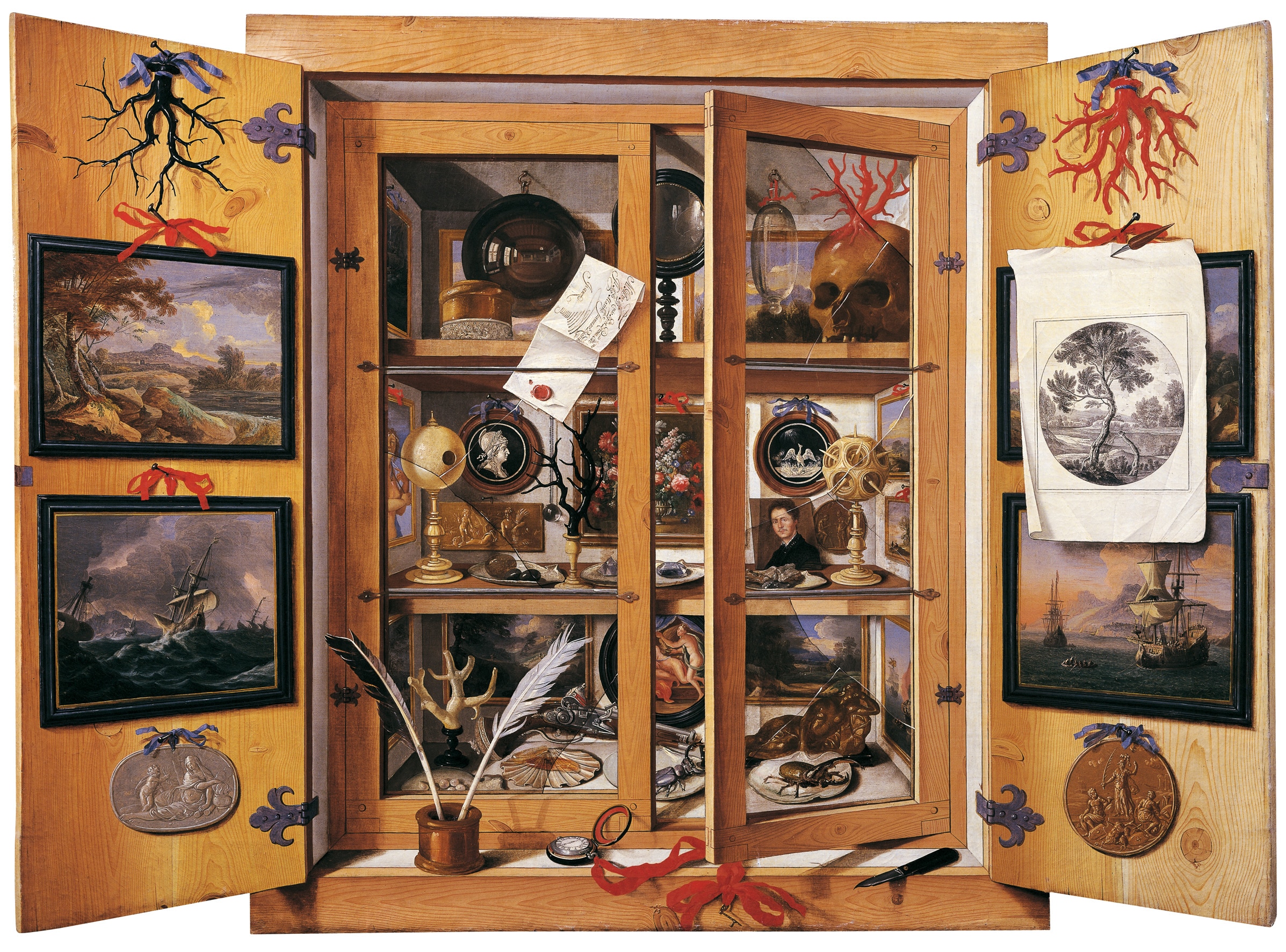
“Cabinet of Curiosities” painting by Domenico Remps, 17th century.
Display. Part of the fun of collections has always been in their display. As early as the 1600s, “curiosity cabinets” were used to display one’s collection of trinkets acquired from around the world. Traditionally, these cabinets housed natural history-like items such as rocks, fossils, plants, etc. Either way, the idea of displaying one’s collection caught on.
When you collect something, you don’t just put it up in a closet for safe-keeping. You put your football cards into a nice binder with special sleeves, so people can look through and admire your collection. You display your souvenir spoons in a specially-made cabinet; you hang your vintage cowboy hats in your office or garage. Come up with a creative way that displays your collection to potential admirers, as if those visiting your home are attending a museum – they’ll make for a great conversation starter. As your collection grows, you can hone your display to just the pieces of the highest value (if you go overboard with your display, you’ll just come off like a crazy person).
Be a seller sometimes. Eric Bradley, the author of Mantiques, advises that every “collector should be a seller” and regularly off-load parts of his collection. This, he says, prevents hoarding, and is “the easiest way to invest in your collection and keep it separate from your finances.”
Trading. Let’s go back to William Buell Sprague one last time. He didn’t quite believe in Bradley’s philosophy from above, and never once paid for or sold an autograph. What he did do, quite liberally, was trade with other collectors. Part of amassing your collection means sometimes acquiring pieces for the express purpose of trading. Maybe you’ll even acquire two or three of a particular piece, with the intent of using the extras for trading purposes. In fact many collectibles shows (more on that below) are focused around trading rather than purchasing/selling. Whether wheeling and dealing at flea markets or on Craigslist, trading is the bedrock of the collectibles marketplace.
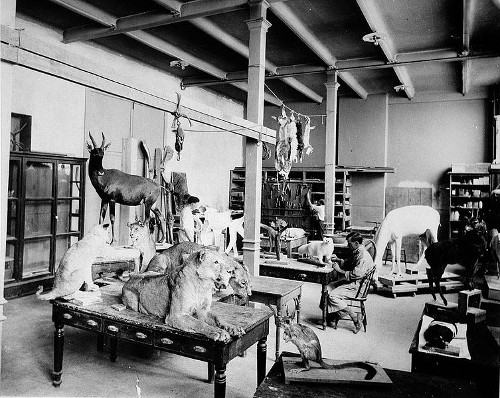
As a boy, Theodore Roosevelt took a great interest in all “curiosities and living things.” He amassed a large collection of insects and animals, which he taxidermied and put on display in the “Roosevelt Museum of Natural History” which was housed in his bedroom. He meticulously classified and indexed the specimens in his collection and wrote detailed natural histories of them based on his observations and research. His interest in zoology continued throughout his life, as he moved on to collecting much larger game, like the animals above, which were killed on his African safari and then donated to the National Museum of Natural History for display and education.
Know the stories. When you acquire a new piece for your collection, do all that you can to find out the story behind it. While a vintage coin is certainly cool, it’s even better when you know about the era it was minted in, about the history of the design, about when and why it was discarded from regular circulation. You won’t always be able to find information about particular items, especially when acquired from antique stores, but you can almost always find out about the time period, or about how people used items of that sort.
Or perhaps in the act of collecting, you’ll acquire some of your own stories, because some of the best collections are those that ultimately come from experiences. My collection of brewery drink coasters wasn’t accrued by my digging through the garbage at bars, but from going to new breweries with my wife and friends most weekends. In the course of life adventures, I collect along the way.
One of the best parts of collecting is being able to tell people about your collection. Learn the history and stories of your pieces as much as you can, and you’ll have much more fun telling your kids and grandkids about them.
Where to Find Items
As we discussed earlier, much of the joy of collecting is found in the thrill of the hunt. When on a weekend you’d normally be sitting on your butt watching movies in your underwear, you can instead be out and about, prowling for the next piece to add to your collection.
- Antique stores. The key with going to antique stores is to take your time. If you just quickly scan the shelves and displays, you’ll only find the most expensive and prized items. Make sure you dig through every box and case and you’ll be guaranteed to find some treasures. Use www.antiquemalls.com to find stores in your area.
- eBay. The beauty of eBay is that you can often find exactly the piece you’re looking for, which could otherwise take years. It eliminates some of the thrill of the hunt, but it often still takes a lot of digging and haggling to get what you want for the price you want. One downside is that you can’t fully inspect a piece before buying, so you can never be sure that what you see in pictures is what you’re getting.
- Craigslist. Another online option, and one that I like a little better, is Craigslist. You’re searching online, but dealing locally as well as inspecting your items before purchasing.
- Garage/estate sales. These sales are often going to be the best deals you find, as people often have no idea of the true worth or collectible nature of what they’re selling. Your best bet is to hit up these sales on Friday afternoon or Saturday morning when they first open. Don’t discount Sundays, however; in my experience a lot of folks will make everything half off on Sundays in order to just get rid of their inventory. Also be sure to look for neighborhood garage sales — those weekends where neighborhoods will organize and get folks in their area to all have garage sales at the same time.
- Flea markets. Open-air markets have experienced a bit of a renaissance as of late. Many flea markets are actually getting more consumer-oriented and being housed in permanent structures with bathrooms and food options. While the digs may be nicer in some instances, the beauty of the flea market remains: the thrill of the hunt, haggling with dealers, and maybe even executing some trades.
- Collector’s shows. Most collectibles these days have “shows” or conventions. They’re basically a big get together of like-minded collectors in order to acquire new pieces (often through trading, but with old fashioned cash exchanges as well), gain more expertise in the field, and simply build some community with fellow collectors. Finding shows for your collection is as easy as googling your collectible + “show” (for example, “stamp shows” or “beer collectible show”).
50+ Ideas for a Manly Collection
The various items you can collect are innumerable. Below are a number of items that men — both young and old alike — have collected for generations. With collectibles, it’s almost always more fun (and valuable) to collect vintage and antique items rather than new items, because new items aren’t rare or unique. If something piques your interest, start some research and dig in!
- Alcohol (rare beer, whiskey, wine, etc.)
- Antique shaving supplies
- Art
- Autographs
- Badges (police, firemen, etc.)
- Beer cans/brewery collectibles
- Board games
- Books
- Business cards
- Campaign buttons
- Casino chips
- Challenge coins
- Cigar bands
- Cigar boxes
- Clocks
- Coin banks
- Coins
- Cologne bottles
- Comics
- Die-cast models (cars, farm equipment, military vehicles, etc.)
- Drink coasters
- Fishing lures
- Foreign money
- Fossils
- Fountain pens
- Guns
- Hats
- Journals
- Keychains
- Keys
- License plates
- Lighters
- Lunch boxes
- Magazines
- Maps/globes
- Marbles
- Matchbooks
- Mugs
- Musical instruments
- Neckties/bowties
- Oil cans
- Patches
- Photographs
- Playing cards
- Pocketknives
- Postcards
- Posters (concert, movie, etc.)
- Records
- Smoking pipes
- Souvenir spoons
- Sports cards
- Sports memorabilia
- Tin signs/advertisements
- Tools
- Toys
- Stamps
- Watches


